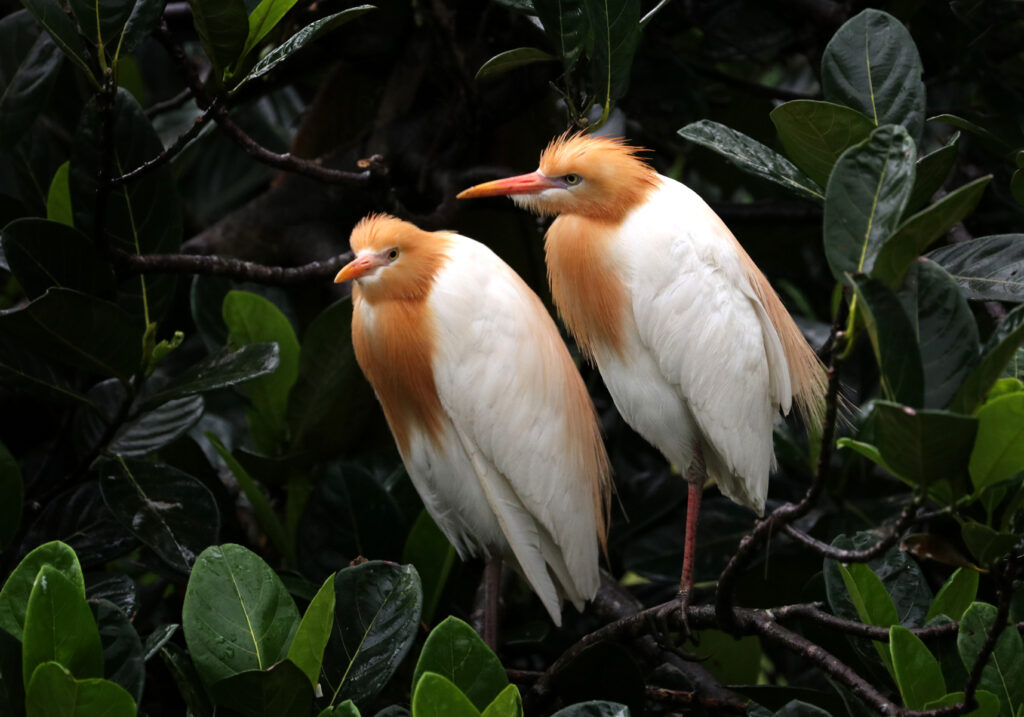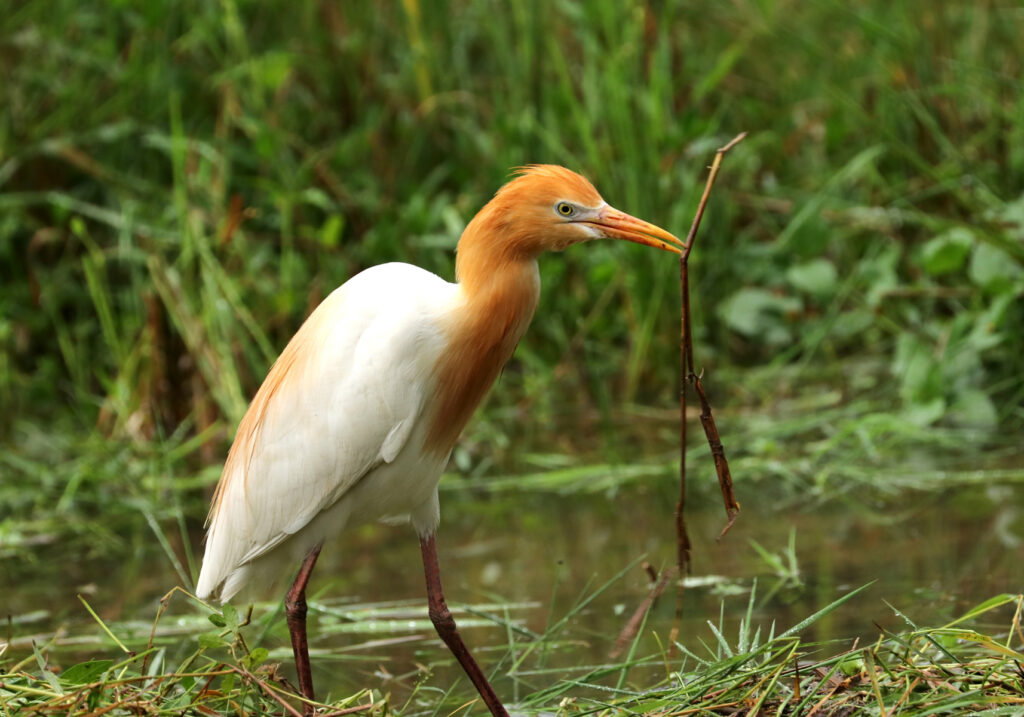In the heart of Bali, where the sky meets the lush landscapes, the enchanting dance of white herons, known locally as kokoan, unfolds. These majestic birds, emblematic of Bali’s vibrant ecosystem, grace the skies with their serene flights and intricate formations, seamlessly integrating into the island’s picturesque scenery. Among their favored haunts is the serene Petulu Village, a place where nature and tradition intertwine, offering a unique spectacle that captivates the hearts of all who witness it.
Nestled just north of the bustling Ubud, a mere 15 minutes from the famed Ceking Rice Terraces of Tegallalang, Petulu Village stands as a bastion of tranquility. Its traditional Balinese architecture and the rhythm of daily life continue unaffected by the outside world, with artisans and farmers coexisting in harmony. Yet, as the sun dips below the horizon, the village transforms into a stage for one of nature’s most splendid performances.
The herons of Petulu, drawn to the village by the abundant pohon bunutwot trees, Weeping fig tree (Ficus benjamina), find both refuge and a place to thrive. These trees, lining the village’s single road and dotting the compounds, offer the perfect perch for the birds, their strong yet flexible branches cradling the nests of thousands. As evening approaches, the sky above Petulu bursts into life, echoing with the calls of herons as they return from their day’s journey, their silhouettes painting the sunset with strokes of white and amber.
A 2017 study revealed the village as a thriving ecosystem for these birds, with over 4,000 herons calling it home, their nests adorning the village’s canopy. This natural marvel not only offers a breathtaking vista but also a testament to the harmonious coexistence of humans and nature.
Visitors to Petulu are advised to arrive before sunset to witness the herons’ return, a spectacle best viewed from the village’s community center. Despite the lack of a formal entry fee in recent times, the experience remains priceless, offering unmatched opportunities for both reflection and photography. Yet, as one wanders beneath the canopy, caution is advised; the herons, secure in their treetop abodes, leave reminders of their presence on the paths below.
Beneath the surface of this natural wonder lies a tapestry of local lore and myth, intertwining the herons of Petulu with the very soul of Bali. Some believe these birds to be the reincarnated spirits of those lost during turbulent times in Indonesia’s history, a poignant reminder of the village’s past. Others celebrate their arrival as a blessing, a symbol of peace and sanctity brought forth by ancient rituals. These legends, whether rooted in history or spirituality, add a layer of mystique to the village, making Petulu not just a place of natural beauty, but a sanctuary of cultural and historical significance.
Petulu Village, with its ethereal inhabitants and timeless charm, stands as a testament to Bali’s enduring allure, a place where the past and present, the spiritual and the natural, converge in a symphony of beauty and tranquility.
Maximizing Your Visit to Witness the Herons at Petulu Village
To fully appreciate the remarkable sight of the herons returning to Petulu Village, timing and positioning are key. Arriving before the golden hour, around 5pm, ensures you’re in place to observe the majestic flight of the herons as they find their evening refuge. This spectacle begins to unfold shortly before sunset, with the prime viewing period occurring before 5:45pm, as the birds settle into their nests among the trees.
This elevated platform offers unparalleled views of the herons as they converge against the backdrop of the setting sun, navigating above the lush canopy of palm trees and over the picturesque landscape of farmlands and rice fields. Here, in the heart of Petulu Village, you’re afforded a front-row seat to one of nature’s most enchanting performances, a serene and unforgettable experience.
The Enigmatic Lore of Petulu Village
Petulu Village, nestled in the heart of Bali, is shrouded in mystical lore that intertwines its history with the ethereal beauty of white herons. Among the villagers, a poignant belief prevails: these herons are the reincarnated spirits of thousands who lost their lives during the tumultuous period of the Indonesian Communist Party regime in the 1960s. This era, marked by an intense anti-communist purge, left a scar on the nation’s history. Legend has it that the souls of those tragically massacred manifested as herons in Petulu, making their first appearance a week following an unsuccessful communist coup attempt in September 1965. Before this event, herons had never been sighted in Petulu, yet from that moment on, they have graced the village skies every afternoon, a haunting reminder of a past that many prefer to leave unspoken.
In contrast to this somber tale, Petulu is also embraced by a more celebrated myth, one of spiritual renewal and divine intervention. On October 25, 1965, the villagers engaged in Ngusa Benining, a significant ceremony aimed at cleansing their community of malevolent energies. Weeks later, on November 7, their prayers for peace were answered in an extraordinary way. Thousands of white herons, creatures revered as sacred and auspicious, descended upon Petulu, filling the air with a sense of wonder and reverence. In gratitude, the villagers performed the Pemagpag ceremony, a ritual welcoming these avian visitors, now considered harbingers of peace and good fortune.
These herons have since become a symbol of the village, occupying the trees along the roadside that stretch from the sacred temples at the village’s northern edge to the Pura Agung Basukih temple in the south. The birds’ selective habitation, avoiding nesting in areas behind the villagers’ homes traditionally associated with impurity, underscores a deep respect for local customs and spiritual beliefs. This unique pattern of nesting has further cemented the herons’ place in the heart of Petulu’s cultural and spiritual landscape, making the village not just a home to these magnificent birds but a living testament to the complex tapestry of Balinese tradition and lore.


